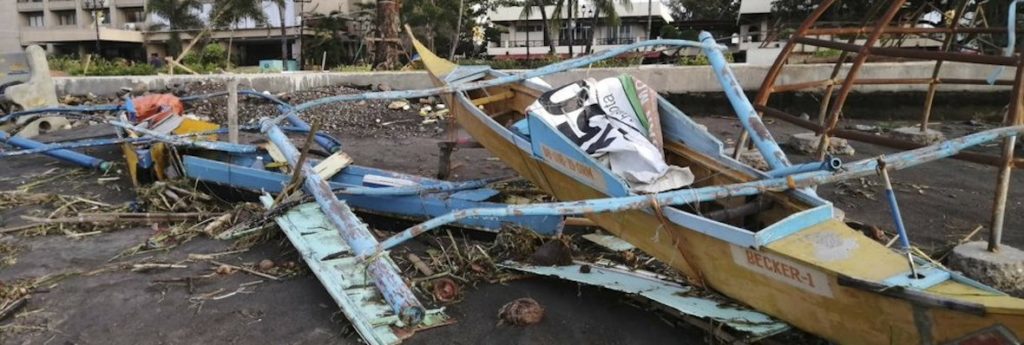A strong typhoon that barreled through the central Philippines left at least 20 people dead and forced thousands to flee their homes, devastating Christmas celebrations. Typhoon Phanfone stranded many people in sea and airports at the peak of holiday travel and set off landslides.
The impact was seen in flooded low-lying villages, destroyed houses, downed trees and electrical poles and knocked out power in entire provinces. One disaster response officer described the battered coastal town of Batad in Iloilo province as a “ghost town” on Christmas Day.
“You can’t see anybody because there was a total blackout, you can’t hear anything. The town looked like a ghost town,” Cindy Ferrer of the regional Office of the Civil Defense said by phone.
The storm weakened slightly on Thursday as it blew into the South China Sea with sustained winds of 120 kilometers (74 miles) per hour and gusts of 150 kph (93 mph) after lashing island after island with fierce winds and pounding rain on Christmas Day, the weather agency said.
Most of the 20 deaths reported by national police and local officials were due to drowning, falling trees and accidental electrocution.
More than 25,000 people were stranded in sea ports across the central region and outlying provinces after the coast guard prohibited ferries and cargo ships from venturing into dangerously choppy waters.
Dozens of international and domestic flights to and from the region were canceled, including to popular beach and surfing resorts.
About 20 typhoons and storms batter the Philippines each year. The Southeast Asian nation is also located in the Pacific “Ring of Fire,” where earthquakes and volcanic eruptions often occur, making the country of more than 100 million people one of the world’s most disaster prone.
Phanfone, a Laotian word for animal, traveled along a path similar to that of Typhoon Haiyan, one of the most ferocious storms on record, which left more than 7,300 people dead and missing, flattened entire villages, swept ships inland and displaced more than 5 million people in the central Philippines in 2013.

